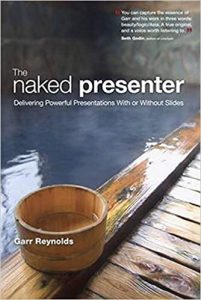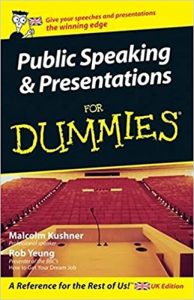
Editor’s Note – This article is the first in a Presenter’s Guide Series by Jerry Lawson. Please see also Presenter’s Guide Series, Part II Dealing With Difficult Questions.
OK, you have gotten through the body of your presentation satisfactorily. Time to relax, right? Nope. There is one hurdle left: The question and answer period. This is when some presenters wilt and others shine. With a few tips, some experience and a modicum of intestinal fortitude, you can shine every time. Here’s how:
Anticipate questions. It’s usually easy for a well prepared speaker to anticipate likely questions. Take a little time to plan how you will approach the most difficult. Advance preparation gives you the option to pre-empt troublesome questions by addressing them yourself during the body of your presentation.
Set the ground rules. At the beginning of your talk tell the audience whether you will be taking questions, and if so, when. Taking questions only after you have finished speaking has much to recommend it.
Ask yourself the question you most want to answer. At the beginning of the Q & A period tell the audience; People often ask [whatever].” This lets you start strong with an answer that will help you get your message out. Some speakers have been known to plant a question with a friendly audience member.
Maintain appropriate eye contact. Focus your attention on the questioner when she is speaking. This is a way of demonstrating engagement and respect. When answering the question shift your focus to the audience. This subtly draws the audience’s attention away from the speaker and toward you.
Repeat the question. In many venues audience questions will be inaudible to most attendees. Repeating the question also reduces the possibility of misunderstanding. A side benefit: Repeating the question can gain a few seconds to formulate your answer.
Ask the questioner to elaborate if the question is unclear. Restating the question can be an effective technique. Try paraphrasing it and asking the questioner if your restatement reflects her concerns.
 Reflect before reacting. After repeating the question don’t be afraid to take a few seconds to think before you begin your answer. As noted by Garr Reynolds in The Naked Presenter (2011): It’s a conversation, not a race.
Reflect before reacting. After repeating the question don’t be afraid to take a few seconds to think before you begin your answer. As noted by Garr Reynolds in The Naked Presenter (2011): It’s a conversation, not a race.
Avoid the trap of believing you must know the answer to every question. No one knows everything. Offering to look up the answer after the presentation is often the best approach. Some speech experts recommend that if you are stumped you should solicit answers from the audience. This is a good approach in some situations.
Compliment the questioner if deserved. Some speech instructors discourage the practice of complimenting an audience member for asking a good question. Their theory is that this will discourage other audience members from asking questions for fear theirs won’t be as good.
My experience has been exactly the opposite. I’ve gotten multiple benefits from complimenting good questions and use this technique frequently. I will sometimes even make a big deal of thanking the questioner for reminding me of such an important point. If handled well the compliment will serve to emphasize a key point I want to make: “Thank you! This is one of the most important questions that could be asked about this topic.”
Liberal use of compliments also tends to encourage other audience members to ask questions, i.e., ones that will also earn the approbation of the authority figure in front of the room (you).
Embody brevity. Rambling, repetitive answers are one of the most common—and damaging—Q & A errors. Don’t squander the good impression you have worked so hard
to create in the body of your presentation. Make the important points concisely and then shut up.
Respect questioners. Never inadvertently make a questioner feel ignorant or stupid. Also avoid disrespecting them more subtly by appearing to be bored or condescending in your
answer.
Unless the questioner is blatantly a major league jerk the rest of the audience will identify with them, not you, so disrespecting a questioner is the functional equivalent of disrespecting the whole audience. Even if you wish you were somewhere else, you should strive to treat each questioner like she is star NPR interviewer Terry Gross and you are a guest on her show Fresh Air.
 Match your demeanor to the question. Malcom Kushner provided some not-so-dumb advice in Public Speaking for Dummies:
Match your demeanor to the question. Malcom Kushner provided some not-so-dumb advice in Public Speaking for Dummies:
- If someone is confused, be understanding. If someone is blatantly offensive, be forceful and disapproving (without counterattacking).
- If someone is seeking information, be professorial. Never lose control of yourself.
Know how to deal with a dead audience. No questions? Not a problem for the resourceful presenter!
- Prime the pump by asking yourself a question, one whose answer will advance the purposes of your presentation.
- Ask a question that an audience member asked you privately before your talk.
- Break the ice by asking the audience questions: “How many of you think X? How many think Y”
- Offer to answer questions privately. Some audience members may have questions they don’t want to expose to the group.

Do not let the Q&A session run late. This goes double if you are the last speaker before lunch or the last speaker of the day. In fact, end your presentation early if possible. This is one of many things I learned from the best presenter I’ve been lucky enough to work with, Greg Siskind. Invite those who still have questions to catch up with you after the formal session.
Finish strong. Questions all answered? No questions? Either way, whatever you do, don’t say something like, “Well, I guess that’s it” and creep off stage. Reiterate a key point you made or wanted to make, and thank the audience for their attention.
